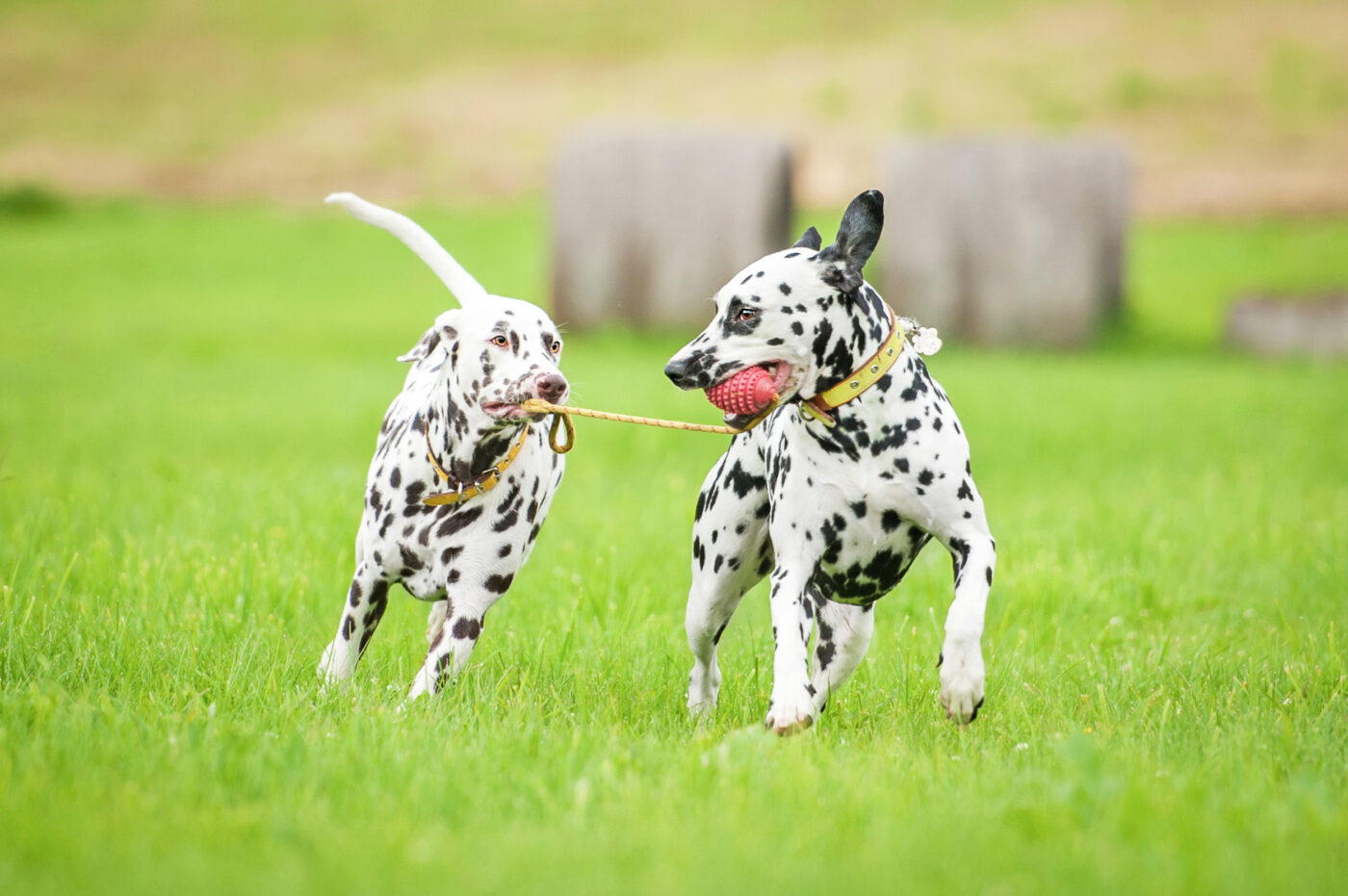Keeping the Peace: Living with Multiple Dogs Under One Woof
By Ali Oliver
If you’re a dog lover, you know that one is never enough. Many pet owners opt to bring multiple dogs under one roof, which can be a lot of fun but also a lot of work. Managing multiple dogs can be challenging and requires careful planning and execution. In this article, we’ll provide expert advice on managing a multi-dog household, including tips on dog training, feeding, and socialization. Whether you’re a seasoned dog owner or just starting out, this guide will help you create a happy and healthy home for your entire pack. So, let’s learn how to get dogs to get along!

Understanding Dog Behavior
Before we dive into the tips, it’s important to understand dog behavior. Dogs are pack animals, which means when you have groups of dogs together they have a natural instinct to form social hierarchies. In a multi-dog house, it’s important to establish yourself as the leader of the pack. Put yourself in the alpha position. This means setting rules and boundaries and enforcing them consistently.
It’s also important to understand each dog’s personality and temperament. Some dogs are naturally more dominant or submissive, and this can affect their behavior in multi-dog homes. Make sure to give each dog individual attention and training, and don’t favor one dog over the others. This can be challenging when you are bringing a new dog home, such as a new puppy. You might naturally spend more time with the puppy as you help train it and acclimate it to your home but don’t forget to give your existing dogs plenty of care and attention too so they don’t feel the need to compete for your affection.
Finally, be aware of signs of stress or anxiety in your dogs. Pick up on changes in their body language. This can include excessive barking, destructive behavior, or aggression toward other dogs or people. If you notice any of these behaviors, it’s important to address them immediately to prevent further issues.
Creating a Structured Routine for Your Dogs
One of the most important aspects of managing a multi-dog household is creating a structured routine. Dogs thrive on routine and predictability, so establishing a consistent schedule for feeding, exercise, and training can help reduce stress and conflict.
Make sure to feed your dogs separately, in neutral territory, to prevent competition over food. To prevent resource guarding, make sure to provide plenty of resources for each dog. This means having separate food bowls, water bowls, and toys. If you do notice resource guarding or aggressive behavior, it’s important to address it immediately. This can include separating the dogs during feeding times or providing more exercise and stimulation to prevent boredom and frustration.
When it comes to exercise, make sure each dog gets their fair share of entertainment and movement. This can help prevent boredom and destructive behavior. Taking them on a long walk, fetching at the dog park, swimming at the lake or a good ole’ game of tug-of-war are all good ideas when looking for positive forms of exercise.
Training is also crucial in a multi-dog household. Each dog should be trained individually, but also as a group. Teach your dog basic obedience commands like sit, stay, and come, but also work on socialization skills like polite greetings and playing nicely with other dogs.
Dealing with Aggression and Conflict Between Dogs
Even with the best planning and management, conflict between dogs can still occur. One strategy is to use positive reinforcement training to reward good behavior and redirect negative behavior. This can include teaching each dog to “leave it” or “drop it” when they become possessive over a toy or treat. Dogs are not naturally good at waiting their turn. A baby gate can provide a safety barrier if you have two or more dogs that need to distance themselves.
In some cases, professional help may be necessary. A dog behaviorist or trainer can help identify the root cause of the aggression and provide a customized training plan to address it.
Conclusion
Managing multiple dogs can be challenging, but with the right strategies, it’s possible to create a harmonious home where you and your dogs can thrive. Remember to establish yourself as the leader of the pack, create a structured routine, manage resources, and address any aggression or conflict immediately. With these tips in mind, you’re well on your way to keeping the peace in your multi-dog household!
